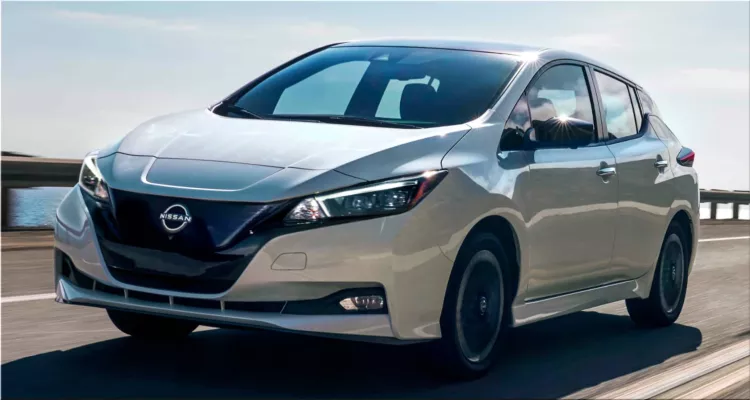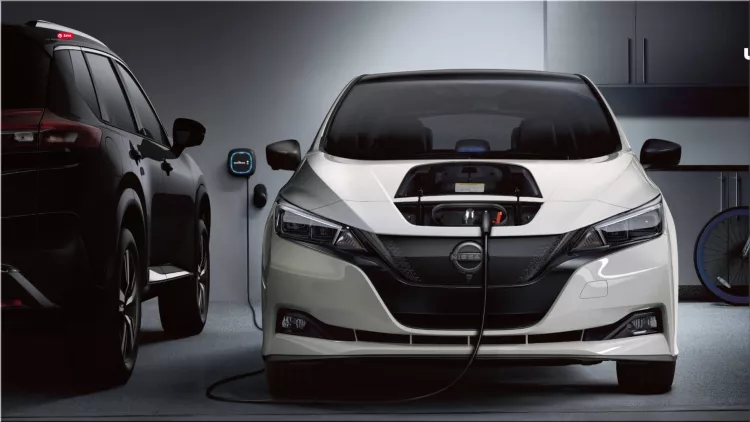The Nissan Leaf: How It Became America’s Cheapest Ev Thanks To A New Legislation
The Remarkable Comeback of the Nissan Leaf: How It Regained Its EV Tax Credit and Reduced Its Price to $24,400
The Nissan Leaf is one of the most popular and affordable electric vehicles (EVs) in the world. It has been in production since 2010 and has sold over 577,000 units globally by February 2022. In 2024, the Leaf made a remarkable comeback. Thanks to a new legislation that revived and expanded the EV tax credit, the Leaf regained its eligibility for up to $3,750 in federal incentives. This effectively reduced its starting price to $24,400, making the Nissan Leaf the cheapest EV in America.
How did this happen? And what does it mean for the future of the Leaf and the EV industry?
The EV Tax Credit: A Brief History
The EV tax credit is a nonrefundable credit that reduces the income tax liability of taxpayers who purchase qualified EVs or plug-in hybrid vehicles (PHEVs). It was first introduced in 2009 as part of the American Recovery and Reinvestment Act, with the aim of stimulating the economy and promoting the adoption of clean energy vehicles.
The original credit amount was up to $7,500, depending on the battery capacity of the vehicle. However, the credit was also subject to a phase-out mechanism that reduced the credit by 50% once a manufacturer sold 200,000 eligible vehicles in the US. This meant that early adopters of EVs could benefit from the full credit, while later buyers would receive less or no credit at all.
The phase-out mechanism was controversial, as it created an uneven playing field for different automakers and consumers. Some critics argued that it penalized successful EV manufacturers like Tesla and Nissan, who reached the 200,000 threshold in 2018 and 2019, respectively. Others claimed that it discouraged innovation and competition in the EV market, as it favored newer entrants who could still offer the full credit to their customers.
In 2022, the Inflation Reduction Act changed the rules for the EV tax credit for vehicles purchased from 2023 to 2032. The new legislation increased the credit amount to up to $12,500, depending on the battery capacity, the critical mineral and battery component requirements, and the union status of the workers who produced the vehicle. It also eliminated the phase-out mechanism and replaced it with an income cap of $300,000 for married couples filing jointly, $225,000 for heads of households, and $150,000 for all other filers.
The new legislation also allowed consumers to choose between claiming the credit on their tax returns or transferring the credit to the dealer to lower the price of the car at the point of sale. This gave taxpayers more flexibility in how to apply the benefit and made it more accessible to lower-income buyers.
The Nissan Leaf: A Pioneer and a Survivor
The Nissan Leaf was one of the first mass-market EVs to hit the US roads. It was unveiled in 2009 as the world’s first series-produced battery electric vehicle, and it received several awards and recognition, such as the 2010 Green Car Vision Award, the 2011 European Car of the Year, the 2011 World Car of the Year, and the 2011-2012 Car of the Year Japan.
The Leaf was designed to offer a practical and affordable alternative to conventional cars, with a range of up to 226 miles (EPA rated), fast and easy charging, and innovative features that helped drivers optimize their battery usage and performance. The Leaf also had a modern interior with great cargo space, including fold-down rear seats that allowed for larger items.

The Leaf was initially available exclusively with a large battery pack composed of 192 flat, laminated lithium-ion cells developed in collaboration with NEC. The battery pack was located under the floor and between the wheels, improving the vehicle’s handling and interior space. The 80 kW (110 hp) AC electric motor could propel the Leaf for up to 100 miles (160 km) when the battery was fully charged.
Over the years, the Leaf underwent several improvements and upgrades, such as increasing the battery capacity, enhancing the charging speed, adding more safety and connectivity features, and refreshing the exterior and interior design. The second-generation Leaf was introduced in 2017, with a more aerodynamic and sleeker look, a more powerful and efficient motor, and a more advanced driver assistance system.
The Leaf also faced some challenges and criticisms, such as the limited range compared to some of its rivals, the lack of a liquid cooling system for the battery, the degradation of the battery performance over time, and the loss of the federal EV tax credit in 2019. The Leaf also had to compete with newer and more attractive models from Tesla, Chevrolet, Hyundai, Kia, and others, who offered longer range, faster charging, and more features at similar or lower prices.
Despite these difficulties, the Leaf remained a popular and reliable choice for many EV drivers, especially in markets where it still qualified for state or local incentives. The Leaf also had a loyal fan base of drivers who appreciated its zero-emission performance, spacious cabin, and generous cargo space. The Leaf also had a low maintenance cost and a high resale value, making it a smart investment for many buyers.
The Nissan Leaf: A New Beginning
In 2024, the Leaf made a remarkable comeback. Thanks to the new legislation that revived and expanded the EV tax credit, the Leaf regained its eligibility for up to $3,750 in federal incentives. This effectively reduced its starting price to $24,400, making it the cheapest EV in America.
This was a significant boost for the Leaf, as it made it more affordable and attractive for many potential buyers who were looking for a practical and eco-friendly vehicle. The Leaf also benefited from the increased consumer awareness and demand for EVs, driven by the environmental, economic, and social benefits of switching to clean energy vehicles.
The 2024 Nissan Leaf also had some advantages over some of its competitors, such as its proven track record, its spacious cabin and cargo space, its easy and fast charging, and its innovative features. The Leaf also had a strong brand recognition and reputation, as it was one of the pioneers and leaders of the EV market.
The Leaf also had some challenges and opportunities, such as its limited range compared to some of its rivals, its lack of a liquid cooling system for the battery, its need for a more modern and stylish design, and its potential for further improvements and upgrades. The Leaf also had to face the fierce competition and innovation in the EV market, as more and more automakers entered the scene with new and better models.
The Leaf also had a bright future, as Nissan announced its plans to launch a new EV platform, called the e-4ORCE, that would offer more power, performance, and efficiency for its future EV models. The e-4ORCE platform would feature a dual-motor all-wheel-drive system, a regenerative braking system, and a smart torque control system, that would enhance the driving dynamics, stability, and comfort of the EVs.

The Leaf also had a loyal fan base, as Nissan celebrated the 10th anniversary of the Leaf in the US in 2020, and launched a campaign called “The Electric Decade”, that showcased the stories and experiences of some of the Leaf owners and drivers. The campaign also highlighted the achievements and contributions of the Leaf to the EV industry and society, such as saving over 2.5 billion kilograms of CO2 emissions, driving over 16 billion electric miles, and creating over 40,000 jobs.
Conclusion
The Nissan Leaf is one of the most popular and affordable EVs in the world. It has been in production since 2010 and has sold over 577,000 units globally by February 2022. In 2024, the Leaf made a remarkable comeback, thanks to a new legislation that revived and expanded the EV tax credit, and reduced its starting price to $24,400, making it the cheapest EV in America.
The Leaf has faced some challenges and opportunities in the competitive and fast-growing EV market, but it has also proven its reliability, practicality, and innovation. The Leaf has a loyal fan base, a strong brand recognition, and a bright future. The Leaf is a pioneer and a survivor, and it is ready for a new beginning.

